September 27, 2023
Artist to Watch
CAMILA VARON JARAMILLO
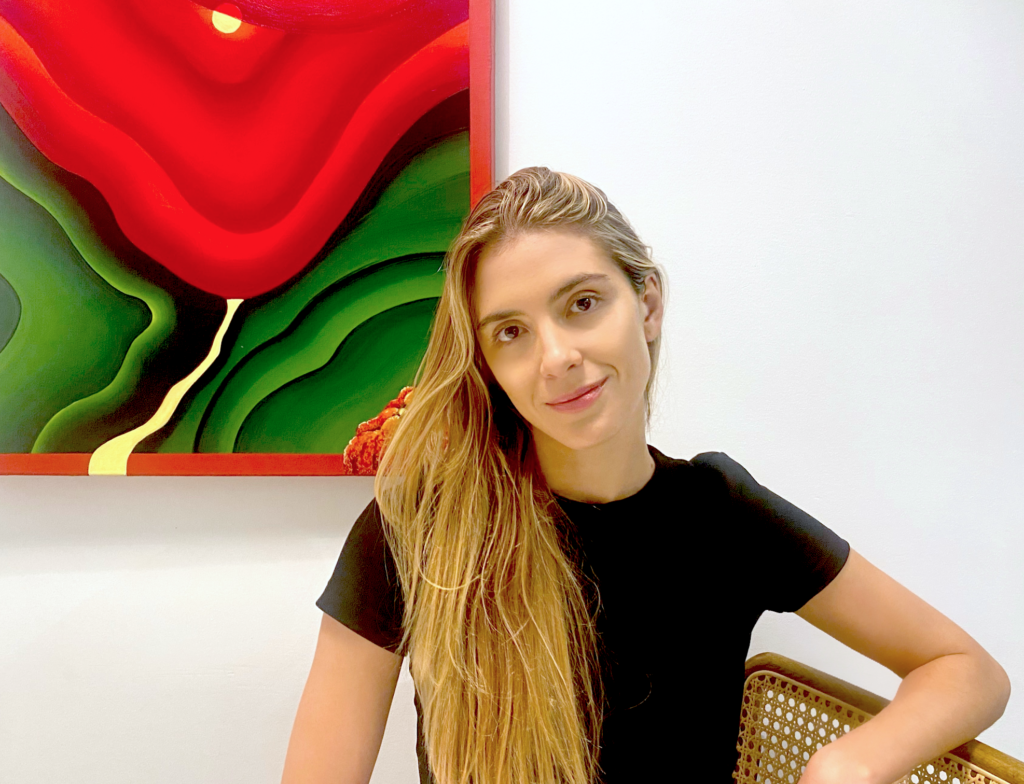
NB: What’s your earliest memory of interacting and/or experiencing art?
CV: When I was little I would come home from school and grab a block of printing paper, sit at the kitchen table, and draw through the entire block. I also remember feeling when I was younger that it wasn’t easy to meet other people or kids that were interested in the same things. Then, when I was thirteen, I visited New York with my mom and she took me to MoMA. I remember looking at some paintings and just being like “Wow! This person sees the sky same way I do!” or “this person sees flowers the same way that I see flowers!” And that sort of made me realize that “these people” were thinking in the same way that I was thinking.
My grandma always painted too. She had a room in her apartment filled with oil paints and paintings of (mostly European) landscapes. Looking back, her paintings were bright, and had a great sense of color.
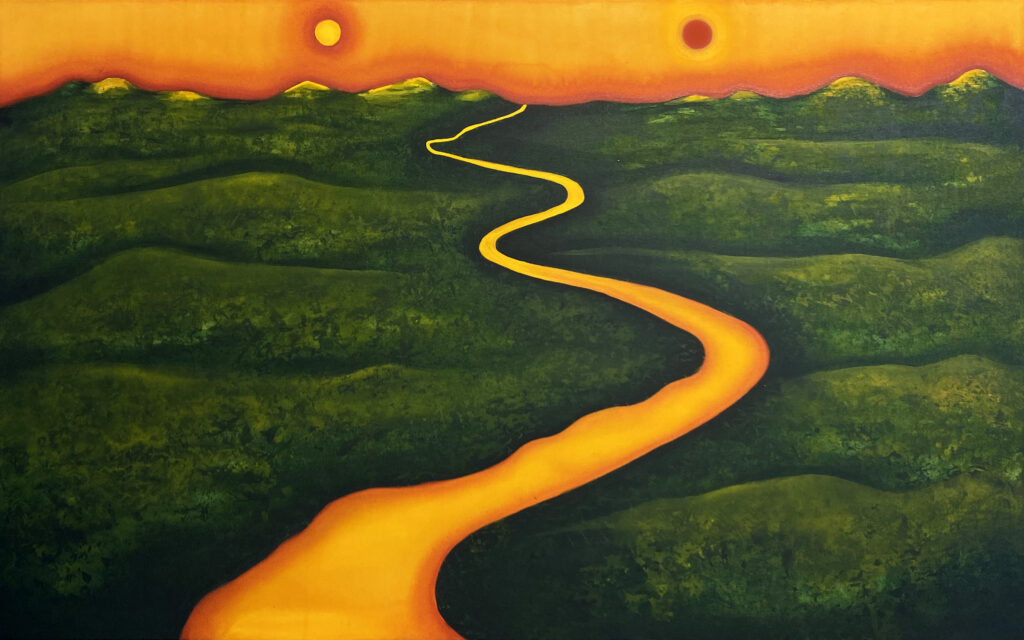
NB: Can you tell us about the themes of space and landscape in your work?
CV: As a young girl I always knew that I wanted to be an artist, but then I ended up studying architecture. Studying architecture felt like studying anthropology or psychology through space, and not so much physical spatial design. So what I learned was how architecture can affect or respond to people, communities, and places. Therefore over time every space acquires an emotional value, and what this means is that a space can affect you emotionally, it can alter your state of mind, and perhaps even shape who you are. So the surroundings that we chose, and more importantly the respect that we have for them, whether it is a constructed environment or a natural environment, has an immense psychological impact in every aspect of our lives and consequently the world around us.
In terms of landscape specifically, that in itself, is loaded with context because I grew up in Colombia, one of the most biodiverse countries in the world. I remember traveling and driving through the mountains, going up and down and around, seeing as the landscapes changed from one place to the other. Colombia has some of the wildest, most beautiful places in nature that I’ve seen, and all of them are extremely different from each other: there’s the Atlantic and the Pacific ocean, the Amazon, the Andes mountains (that splits into three), deserts, valleys and flat plains. At the same time, during the 90’s and 00’s Colombia was very unsafe because of the political situation with guerrillas and narcos, so many of these places were sort of mystical and magical because I grew up hearing about them, but not being able to physically go there, so there was a lot of imagination involved.
Colombia is much safer today, and my generation is sort of rediscovering these places that we grew up hearing of, and rediscovering our own country. I think this says a lot about the psychology of a generation that is interested in traveling within their own country and to nature rather than to other cities around the world. At a personal level, these paintings are perhaps a way to research and reconcile the fact that I am here, and not there.
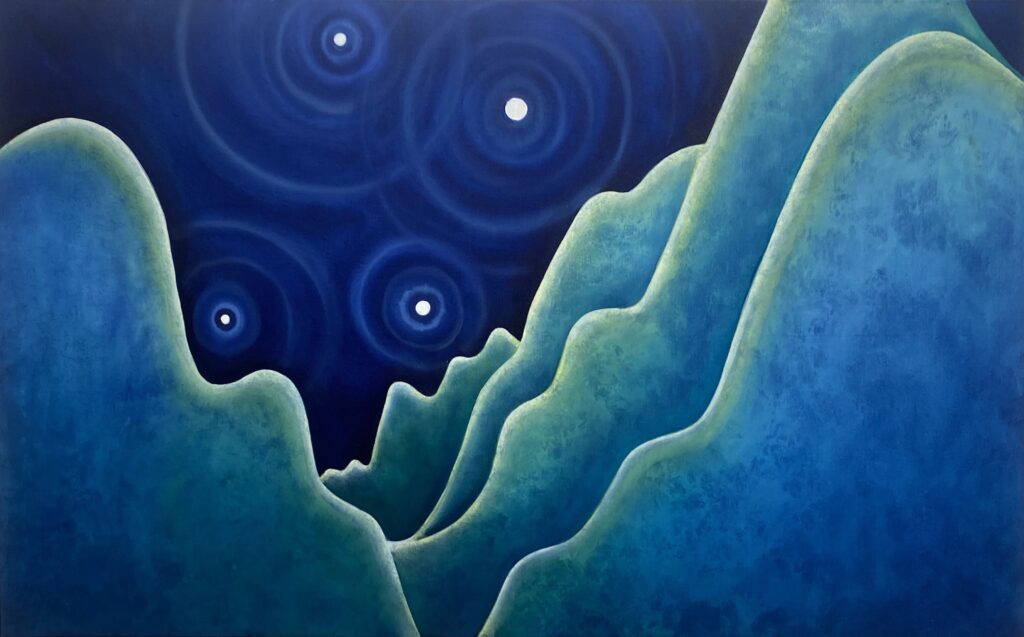
NB: How does your process, color, and material relate to these themes?
CV: When I first started to really focus on landscapes, I was trying to work in a way that would resemble how nature works in real life, so I could learn from it: Working with a lot of water, with movement, rhythm, light, and gravity. I think of these as the ‘common denominators’ and ruling elements of every living thing whether it is a landscape, a flower, or a human being.
While experimenting with textiles, I discovered a silk and cotton fabric that changed the way I used paint and that responded very well to these aspects of nature that I wanted to explore through my work. For example, the fabric allows a lot of light through, and instead of applying paint onto canvas, the fabric absorbs the paint and the color travels to where the surface is most ‘hydrated’. The process is also psychologically more freeing because there’s physically a lot of movement, like being on the floor and working with my hands, letting go of excessive control. These landscapes are created in such a way that they evoke the natural movement of the body, the fluidity of water, the lightness of the material, and the organic shapes that are created through a repetitive rhythm or vibration. All of this energy from the process comes to rest as a painting of a landscape, that then radiates this same energy through an image.
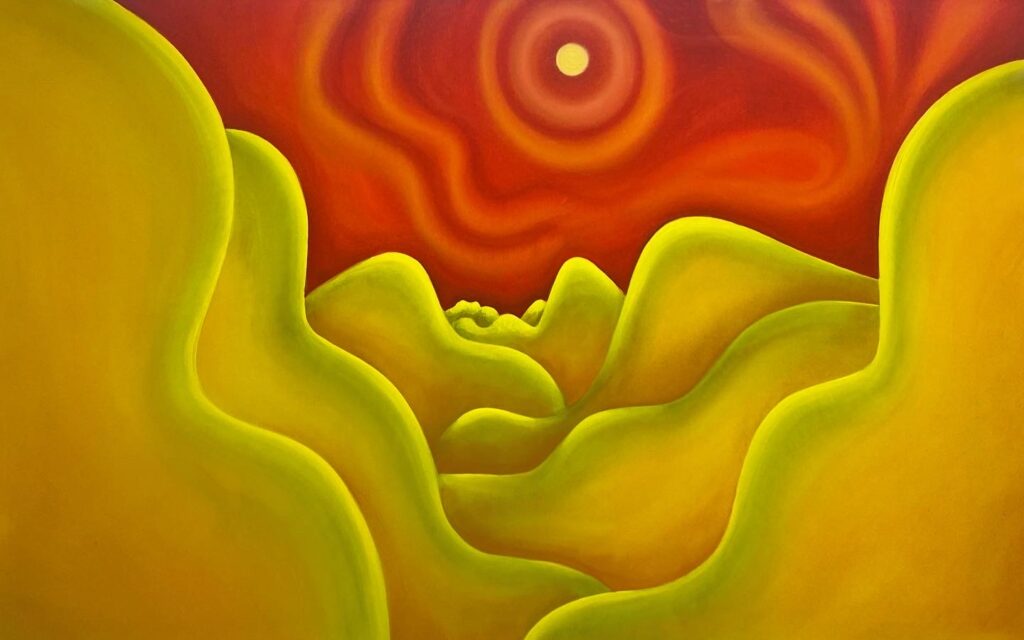
NB: So what are some books or images that you currently have in your studio?
CV: There’s all these little messages on the wall that I like to write around reminding me of what’s important. One of them is “do the dance before con amor” which is a reminder to stretch and dance and leave everything out, to put myself in the right state of mind before beginning to work. There’s Georgia O’Keefe, of course. There’s a book that I love that’s called The Architecture of Happiness by Alain de Botton, which speaks about all these themes that we were just talking about and how to build accordingly. There was this one professor of mine at architecture school that once said “a license to build is also a license not to build” and I think of it very often because of the state of the world today and the rate at which we build and destroy. There’s Fierce Poise, which is Helen Frankenthaler’s biography by Alexander Nemerov, and a little postcard of Alice in Wonderland that my studio neighbor during my MFA at School of Visual Arts gave me because she thought that I was like Alice in Wonderland when I was in the studio.
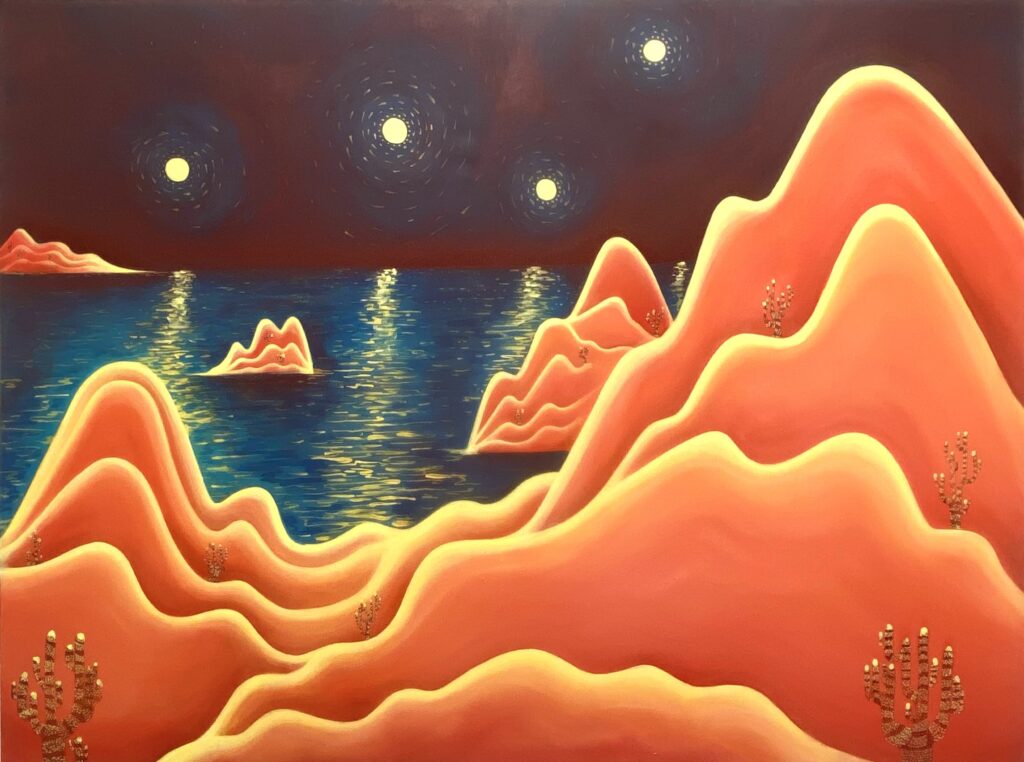
NB: So what are some projects that you’re most excited about in the future?
CV: Well, I’m very excited about my first solo show in New York at 89 Greene, the project space curated by Kathy Battista at Signs and Symbols which opens on October 19th. I also have two paintings at a gallery in Chelsea, Tuleste Factory, where I collaborated with a friend of mine who’s a very talented architect Ceren Arslan. It’s like a whole immersive room, there’s these two paintings and it’s so colorful and fun and otherworldly. There may be a few things coming up in December for Miami, and next summer in LA. I’m happy and curious about what’s to come this year after my MFA, and just spending as much time as possible in the studio (or the Met).

